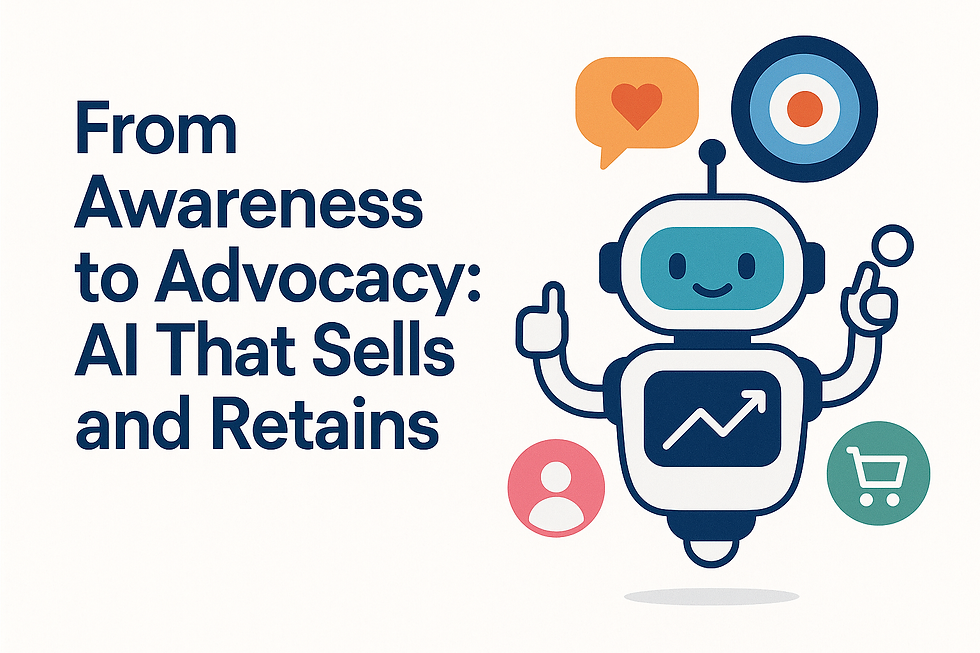Integrating Voice AI into Your eCommerce Stack: What You Need to Know
- eCommerce AI Expert

- Jun 22
- 2 min read

Voice AI is no longer a futuristic novelty—it's quickly becoming a cornerstone of modern customer engagement. From streamlining customer service to enabling hands-free shopping experiences, integrating Voice AI into your eCommerce stack can unlock serious business value. But how do you go about it? What should you watch out for? And most importantly, is your business ready?
Let’s break it down.
Why Voice AI Matters for eCommerce
Voice AI enables natural, human-like interactions between customers and digital platforms—without needing a screen or keyboard. As more shoppers grow comfortable using voice assistants (think Alexa, Google Assistant, Siri), they’re bringing those expectations into their online shopping experiences.
Use cases include:
Handling order queries in real time
Offering product recommendations via voice
Automating return and refund requests
Reducing support wait times through smart call routing
Supporting 24/7 customer service without increasing headcount
Voice AI isn’t just about convenience—it’s about delivering frictionless, scalable support and sales touchpoints.
Key Benefits of Voice AI in eCommerce
1. Always-On Customer Support
Voice AI can handle thousands of queries at once, 24/7. Whether it’s order tracking, product availability, or refund status, your customers get instant answers—anytime, anywhere.
2. Lower Cost-to-Serve
Unlike traditional IVR systems or call centers, AI-driven voice agents require no physical staffing. They reduce average handle times (AHT) and improve first-contact resolution (FCR).
3. Consistent, On-Brand Experiences
With the right platform, you can design voice agents that reflect your brand tone and personality, providing a seamless extension of your customer experience.
Challenges to Watch For
Integrating Voice AI isn’t plug-and-play. Here’s what to consider:
Tech Compatibility: Ensure your voice AI solution integrates well with your CRM, ticketing systems, and existing tech stack.
Training Data: Voice agents rely on intent recognition and NLP—this means training data needs to reflect actual customer queries.
Accent & Language Support: If you operate in global markets, your solution must support local dialects and multilingual capabilities.
Regulatory Compliance: Voice conversations can collect sensitive data. Ensure GDPR and data privacy compliance.
How to Get Started
✅ Assess Your Use Cases
Where are the support bottlenecks? Is it post-purchase queries? Product discovery? Identify the top repetitive interactions you’d like to automate.
✅ Choose the Right Partner
Look for platforms with proven eCommerce experience, real-time integrations, and support for human-in-the-loop escalation when needed.
Platforms like Nurix, for instance, combine advanced voice orchestration with reasoning capabilities—turning static scripts into intelligent agents that truly understand customer intent.
✅ Start Small, Scale Fast
Begin with a few workflows—returns, order status, FAQ—and expand gradually as your agents learn and improve.
Final Thoughts
Voice AI is transforming eCommerce, not just by replacing old-school IVR, but by creating proactive, intelligent experiences that scale. Whether you’re a DTC brand or an enterprise-level retailer, integrating voice AI into your stack can deliver measurable gains in customer satisfaction, efficiency, and bottom-line impact.
Ready to speak your customers’ language? Voice AI is how.




Comments